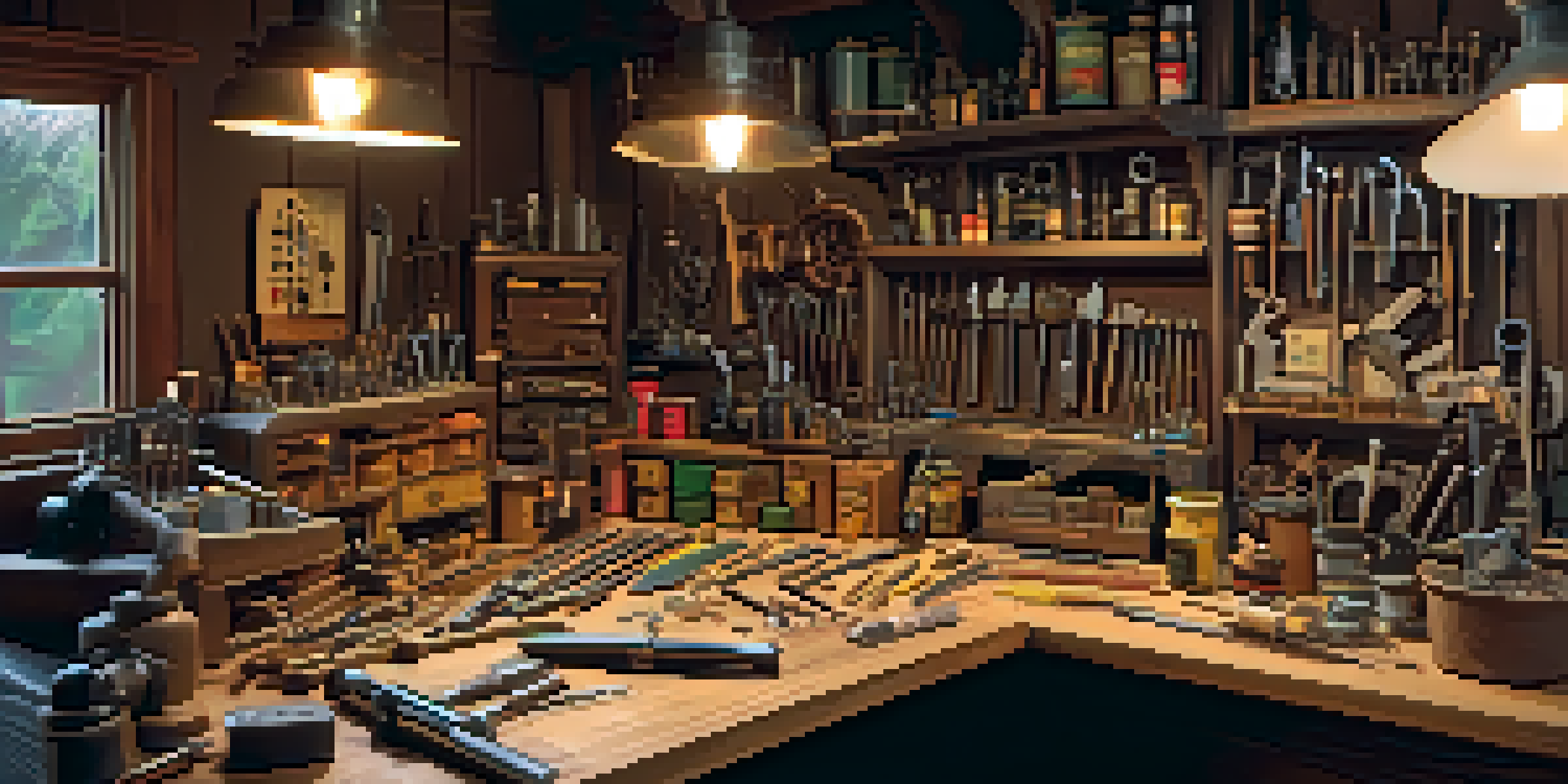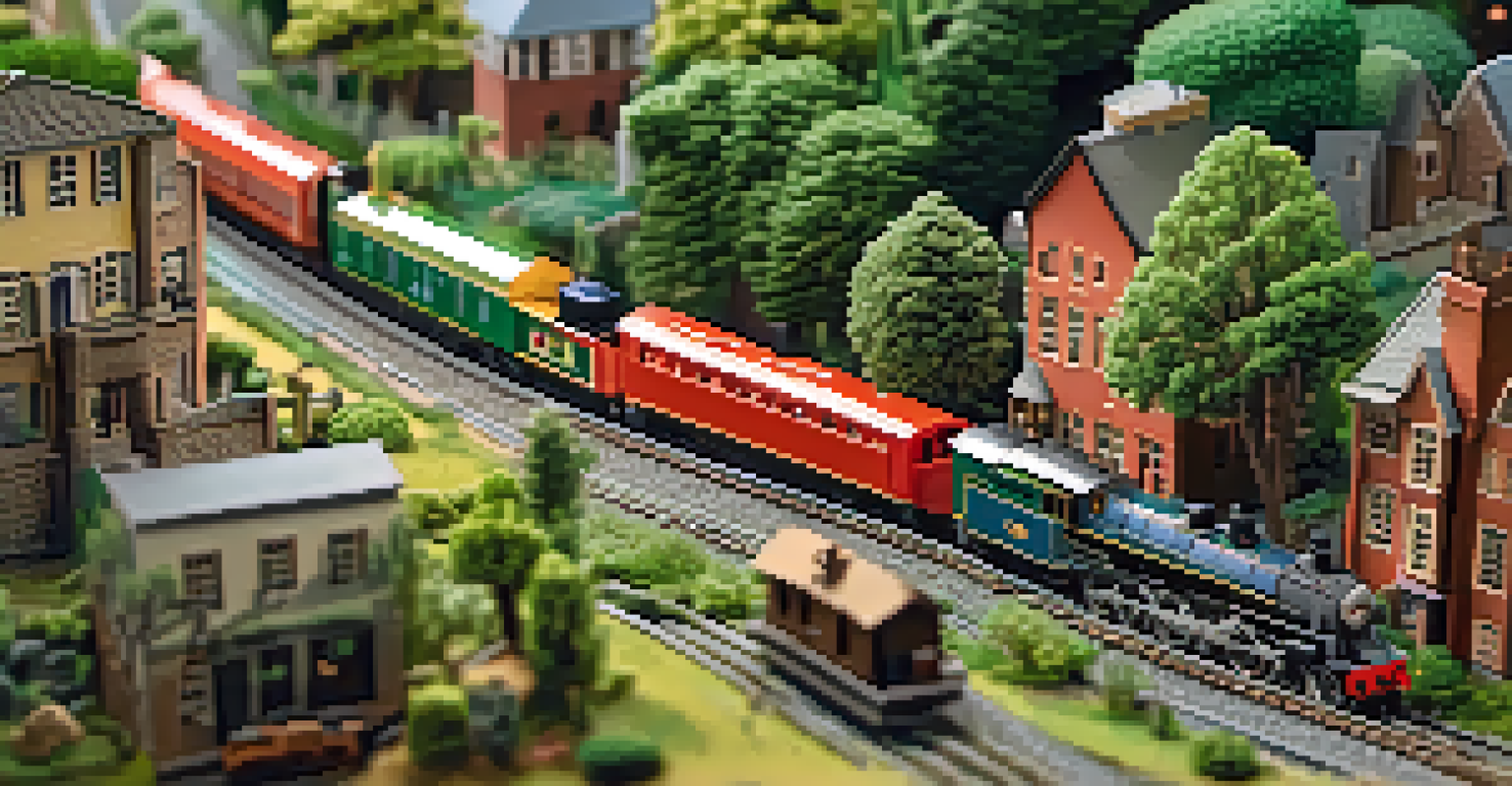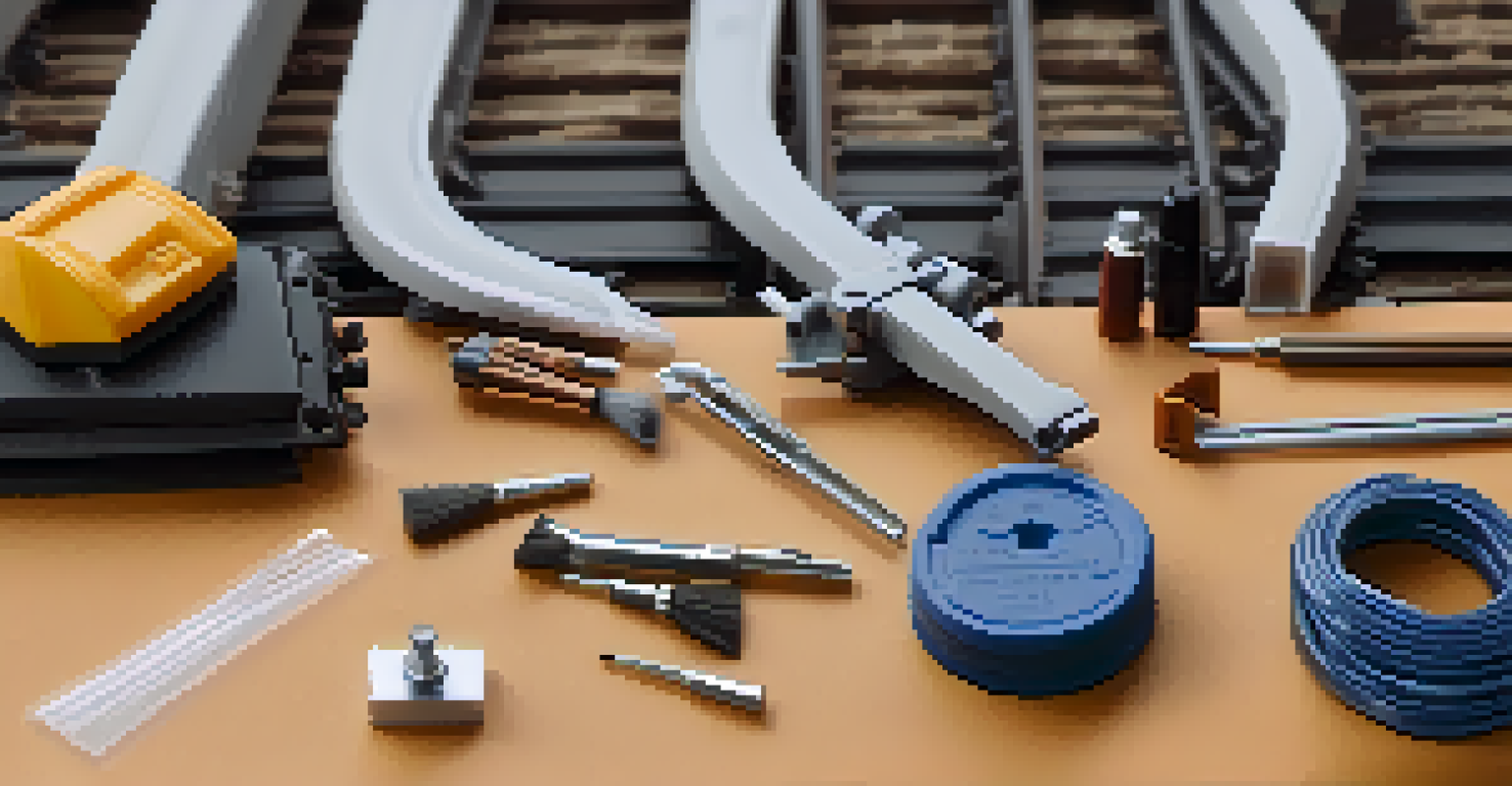Essential Tools for Building Your Model Train Layout

Understanding the Basics: Essential Tools for Beginners
Before diving into the world of model trains, it's crucial to get familiar with the basic tools you'll need. At the heart of any successful layout is a sturdy workbench, where you can lay out your plans and materials. A good set of hand tools, including a hobby knife and scissors, will help you cut and shape your components with precision.
The details are not the details. They make the design.
Additionally, having a ruler and a square will ensure that everything is measured accurately, which is vital for creating a realistic layout. It’s like building a house; without a solid foundation, nothing will stand the test of time. As you gather your tools, consider investing in a magnifying glass, which can be a game-changer for detailed work.
With these basics in your toolkit, you're setting yourself up for success. The right tools not only make the process smoother but also increase your enjoyment as you see your layout come to life. So, embrace these essentials before embarking on your model train adventure!
Cutting Tools: Precision at Your Fingertips
Cutting tools are indispensable when it comes to shaping your model train materials. A quality hobby knife is perfect for making intricate cuts, while a pair of fine scissors can handle lighter materials like paper and thin plastic. Think of these tools as the artist's brush; they allow you to create details that bring your layout to life.

Alongside your hobby knife, consider adding a cutting mat to your workspace. This not only protects your surfaces but also provides a grid for accurate measurements. When you're working with wood or thicker materials, a small saw can be a valuable addition, giving you the ability to make clean, straight cuts.
Essential Tools for Beginners
Familiarizing yourself with basic tools like hobby knives, rulers, and adhesives is crucial for a successful model train layout.
Remember, the key to a beautiful model train layout lies in the details. With the right cutting tools, you can easily manipulate your materials to achieve the desired shapes and designs. So, take your time to choose quality cutting tools that will make every project a breeze.
Adhesives: Bonding Your Layout Together
When it comes to assembling your model train layout, the right adhesives are crucial. From gluing down track pieces to securing scenery elements, having a variety of adhesives on hand will make your life easier. White glue is a staple for many hobbyists, as it's versatile and dries clear, making it perfect for landscaping.
Good design is all about making other designers feel like idiots because that idea wasn’t theirs.
For heavier materials, like wood or metal, a strong epoxy or super glue will do the trick. These adhesives create a permanent bond, ensuring that your layout remains intact even through the rigors of play. Just remember to use these sparingly and carefully; a little goes a long way.
Incorporating the right adhesives into your toolkit not only speeds up the construction process but also enhances the durability of your layout. As you progress, you'll find that the ability to bond materials effectively is as important as the materials themselves. So stock up on a variety of adhesives to ensure your model train layout stands the test of time.
Electrical Tools: Powering Your Model Train Experience
To bring your model train layout to life, you'll need to understand the basics of electrical tools. This includes a soldering iron, which is essential for joining wires and ensuring a reliable electrical connection. Think of it as the lifeblood of your layout; without proper connections, your trains won't run.
In addition to a soldering iron, having wire strippers and a multimeter on hand can make working with electrical components much easier. Wire strippers allow you to prepare your wires for connections, while a multimeter helps you troubleshoot any electrical issues, giving you peace of mind while you work.
Precision with Cutting Tools
Quality cutting tools, including hobby knives and scissors, are vital for shaping materials and adding intricate details to your layout.
By integrating electrical tools into your toolkit, you can take your model train layout to the next level. Powering your trains and accessories opens up a whole new world of possibilities, and with the right tools, you’ll be able to manage your layout's electrical needs with confidence.
Scenery Tools: Crafting Realistic Landscapes
Creating a stunning landscape for your model train layout requires a set of scenery tools designed for detail. Tools like tweezers and small brushes are invaluable for placing tiny figures, foliage, and accessories with precision. Think of them as your sculptor's tools, allowing you to shape the world around your trains.
A scenic knife or spatula can help you spread glue or place materials in hard-to-reach areas. Meanwhile, a flocking tool can assist in applying grass or other textured materials to create a realistic look. These tools not only enhance the visual appeal of your layout but also add layers of depth and interest.
By investing in scenery tools, you're ensuring that your model train layout isn’t just about the trains themselves, but also the environment they inhabit. A well-crafted landscape can transport viewers into a miniature world, making your layout truly captivating.
Measuring Tools: Accuracy is Key
When building a model train layout, accuracy is everything, and that’s where measuring tools come into play. A reliable tape measure is a must-have for taking precise measurements of your baseboards and track layouts. It’s like following a recipe; if you don’t measure accurately, you may end up with a dish that doesn’t quite taste right.
In addition to a tape measure, consider including calipers for measuring smaller components, and a carpenter's square to ensure your angles are just right. These tools will help you maintain uniformity and symmetry throughout your layout, creating a more professional look.
Creative Tools Enhance Experience
Incorporating creative tools like paint brushes and craft knives allows you to add personal flair and storytelling elements to your model train setup.
Ultimately, using measuring tools ensures that all elements of your layout fit together seamlessly. Taking the time to measure carefully will save you headaches down the road, allowing you to focus on the creative aspects of your model train experience.
Maintenance Tools: Keeping Your Layout in Top Shape
Once your model train layout is up and running, maintenance tools become essential to keep everything in tip-top shape. A track cleaner is vital for ensuring smooth operation; dirty tracks can lead to sluggish trains and frustrating derailments. Think of it as regular oil changes for a car; a little upkeep goes a long way.
Additionally, having a small vacuum or brush on hand for cleaning dust and debris can help maintain the scenic beauty of your layout. Regular maintenance not only prolongs the life of your layout but also enhances the overall viewing experience. You wouldn’t want a beautiful painting covered in dust, right?

By incorporating maintenance tools into your toolkit, you’re demonstrating a commitment to quality and longevity. A well-maintained layout not only looks better but also performs better, ensuring that your model train journey remains enjoyable for years to come.
Creative Tools: Enhancing Your Model Train Experience
Lastly, don’t forget about creative tools that can elevate your model train layout to new heights. Tools like paint brushes, airbrushes, and even craft knives allow you to add unique touches and personal flair. Think of these as the artist’s palette—offering endless possibilities to express your creativity.
Incorporating decorative elements like signage, custom-built structures, or themed scenery can further enhance your layout's storytelling. These creative tools help you transform a simple setup into a vibrant, living scene that draws viewers in. It’s about making your layout a reflection of your personality and interests.
Ultimately, the inclusion of creative tools in your toolkit turns your model train layout into a canvas for your imagination. With the right tools at your disposal, you'll be able to create a truly captivating experience that showcases your unique vision.